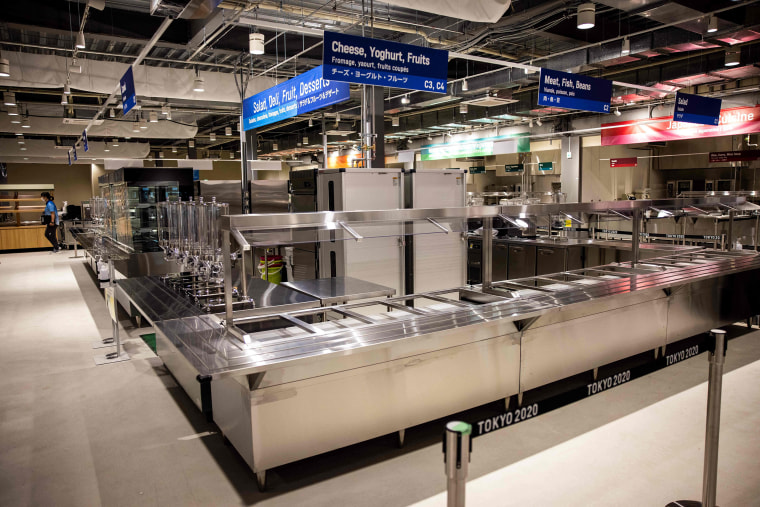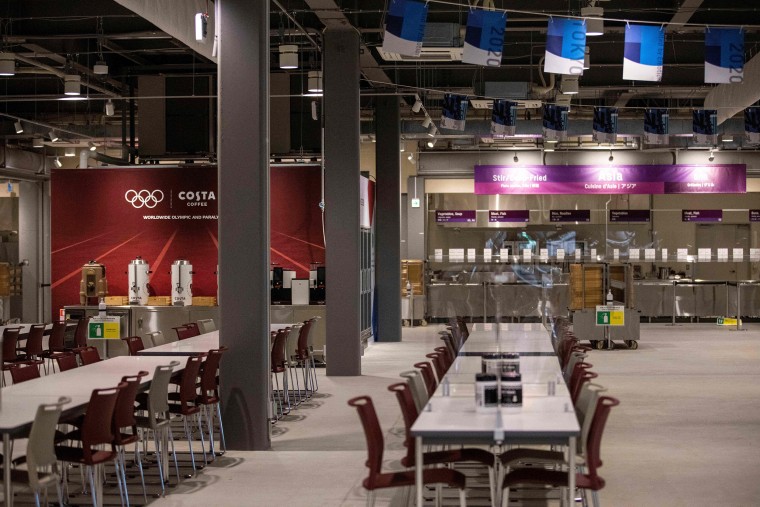The Olympic Games are all about sport — but for some athletes, the food is a close runner-up.
"Not to be dramatic, but these are the best gyoza dumpling things I've ever had in my life," Ilona Maher, an American rugby player, declared on TikTok, adding that she eats them for every meal.
In another video, Maher mmmm'd her way through deep-fried Camembert, ramen and a spring roll.
Erik Shoji, an American volleyball player, has been giving the food rave reviews on TikTok, too.
A sesame fruit salad? "This dressing is delicious." A plate of mixed vegetables? "Cooked to perfection." Garlic-pesto pasta? "This foooood."
He also gave the dumplings a thumbs up: "These gyozas are bomb."
Shoji, who's been sharing updates about life inside the Olympic village on his TikTok, explained that there are two dining halls for athletes: the main dining hall and the casual dining hall, which is all Japanese food.

Many athletes have been using social media to give fans back home a glimpse at what the dining experience in Tokyo has been like.
Daria Gavrilova, an Australian tennis player, shared a tour of the main dining hall on TikTok that highlighted the many options available, from pizza to Asian cuisines to a gluten-free section.
"So much choice!" she wrote. "The food looks so much better than Rio!"
Harry McNulty, an Irish rugby player, also highlighted the vast selection: "A little bit of everything."
He shared a video that ended with a shot of his tray piled with three full plates of pizza, roti, red bean buns and more, all for his lunch.
"The Olympic dining hall caters to all diets, cultures, and the food is brilliant," McNulty said. "It changes most days and no complaints."
Athletes are also sharing details about the safety protocols that are being taken in the dining halls, as Tokyo continues to be under a state of emergency related to the recent COVID-19 surge.

"First we sanitize and put these gloves on before we touch anything," Tilly Kearns, an Australian water polo player, said in a TikTok video, walking through the dining hall. "We go and grab one of these trays. Each individual tray has been sanitized and washed. … As we walk around, obviously we've got our masks on. At each little cubicle, there are disinfectant wipes, so we wipe down everything that we're going to touch."
Kearns revealed the plastic screens that separate diners from each other at the tables: "It makes mealtime conversations pretty difficult because it's hard to hear through them, but it keeps us safe."
"We have a team rule that once the mask is off, you only have 10 minutes to eat to reduce exposure," she added. "Then after we eat, we sanitize again and put another fresh mask on, pick up our scraps with the disinfectant wipe and sanitize again on the way out."
The International Olympic Committee's playbook for athletes and officials confirms that the rules inside the dining halls are strict. Menus are available on a smartphone app, which also shows the congestion levels of each floor, so athletes can plan accordingly. The playbook encourages diners to keep mealtimes "as short as possible," and says athletes who aren't competing should adjust when they eat to avoid the busy periods.
Related:

